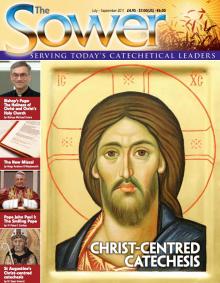Fr. Peter Conley highlights the importance of saints in catechesis and calls on us not to overlook some of their more unexpected sides.
Cardinal John Henry Newman, in his Fragment of a Life of St Philip, has left us an unexpected (and often overlooked) hermeneutic key to unlock the nature of holiness in both canonised saints and those in the making.
‘…a saint’s life may often have in it things not directly and immediately spiritual. To find a saint sitting down to cards, or reading a heathen author, or listening to music or taking snuff, is often a relief and an encouragement to the reader, as convincing him that grace does not supersede nature, and that as he is reading of a child of Adam and his own brother, and he is drawn up to his pattern and guide while he sees that pattern can descend to him; whereas that shadowy paper-Saint, as I may call it, bloodless, ideality which may be set up in the mind from the exclusive perusal of a roll of unconnected details, may, from the weakness of our hearts, chill us unduly, lead (us) to shrink from the Saints and to despond about ourselves. The lights and shades of the saintly character are necessary for understanding what a Saint is.’1
Blessed John Henry challenges us to admit that we can become susceptible to a diet of bland, lifeless accounts of holiness which emphasise the ‘sublime’ without ever delighting in the ‘ridiculous’ or, at least, the quirkiness about a saintly character. The passage pulsates in its appeal to search for a person’s humanity because it is in and through this that we encounter the kindly light of Christ’s divinity shining out from them.
The rest of this online article is available for current Guild members.
This article is from The Sower and may be copied for catechetical purposes only. It may not be reprinted in another published work without the permission of Maryvale Institute. Contact [email protected]

















